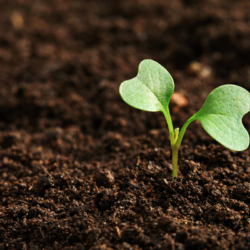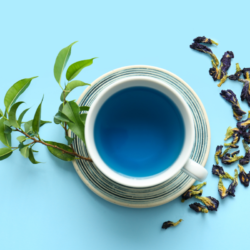In a world where natural health is gaining in popularity, it’s essential to explore the many possibilities offered by medicinal plants. Among these, Orthosiphon, also known as Java tea, stands out as an ancient remedy for the urinary tract. Native to South-East Asia, this plant with its many virtues has long been used in traditional medicine for its diuretic and anti-inflammatory properties. But what are the real benefits of Orthosiphon? How can it contribute to our daily well-being? In this article, we dive into the world of Orthosiphon, exploring its history, traditional uses and modern applications. Get ready to discover the secrets of this exceptional plant and learn more about its role as a urinary tract remedy par excellence.
What is orthosiphon?
Orthosiphon (Orthosiphon stamineus) is native to South-East Asia, particularly Malaysia and Indonesia. It is a shrub that can reach a height of two metres. In spring, before flowering, the leaves and stem tips are harvested and dried.
Orthosiphon has been used for centuries in Indian medicine to relieve urinary tract infections, particularly cystitis. It is also known by several names. These include ” Java tea “, ” barbiflora ” and ” cat’s whiskers “, in reference to its long stamens. Today, it is marketed as a diuretic and cholagogue. It is frequently found in phytotherapy products for weight loss.
In addition to its current uses, orthosiphon has other traditional uses. It is used to treat gout and to relieve joint pain associated with osteoarthritis (rheumatism). Orthosiphon has a rich medicinal history in many cultures.
What are the main pharmacological properties of Orthosiphon leaves?
Orthosiphon’s mechanism of action is still only partially understood. The plant contains various compounds such as flavonoids (in particular sinensetin and eupatorin),caffeic acid derivatives (such as rosmarinic acid) and a large amount of potassium. Orthosiphon’s diuretic activity may be due to the sinensetin and potassium salts present.
In cases of urinary tract infection, increasing the volume of urine, including increased hydration, goes some way to preventing bacteria from adhering to the walls of the urinary tract. When there are no attacks of kidney stones, increasing urine volume aims to prevent the formation of crystals. However, the exact mechanism by which orthosiphon exerts these effects has not been fully elucidated, and more research is needed to gain a fuller understanding.
Diuretic and antilithiasic properties
Administration of orthosiphon increases diuresis, excretion of Na and Cl- ions and elimination of uric acid. It limits K loss, as shown by a study carried out in 2003. This research demonstrates the diuretic, natriuretic and uricosuric effects of orthosiphon. Orthosiphon thus promotes the elimination of kidney stones. It prevents the formation of uric acid crystals. These effects are mainly due to its flavonoids (sinesetin and eupatorin) and caffeic acid derivatives, in particular rosmarinic and cichoric acids.
The plant also contains derivatives of lithospermic acid. Lithospermides have known effects on renal function. They reduce uraemia, increase glomerular filtration rate and promote the excretion of urea and creatinine.
In 2009, a study confirmed that the traditional use of O. stamineus to treat kidney stones has a sound scientific basis. The plant’s active compounds act as ligands for adenosine A1 receptors, making them effective as diuretic agents, an active treatment for kidney stones.
Nephroprotective, hepatobiliary and metabolic properties
Ursolic and oleanolic acids are able to inhibit the binding of TGF-β1 to its receptors in vitro. Orthosiphon could therefore be effective in the treatment of kidney disease, as TGF-β1 plays an important role in the progression of kidney disease.
Orthosiphon stimulates hepatocytes and increases bile secretion (choleretic). It accelerates bile excretion by the liver and promotes bile evacuation (cholagogue).
Orthosiphon has hypoglycaemic properties. In vitro studies involving an ethanolic extract ofO. Stamineus and one of its isolated compounds, sinensetin, have also shown inhibitory activity against α-glucosidase and α-amylase. The inhibition of these enzymes provides a solid biochemical basis for the management of type 2 diabetes, via the control of glucose absorption.
In addition, thanks to its high flavonoid content, orthosiphon encourages the mobilisation of fat from cells. The plant therefore helps to reduce satiety, and is of interest when accompanying slimming diets.
Anti-inflammatory, antioxidant and anti-infectious properties
The plant’s orthosiphols are anti-inflammatory. The diterpenes in orthosiphon inhibit the production of nitric oxide (NO) by macrophages activated by lipopolysaccharide (LPS) in a dose-dependent manner. In vivo, the methanol and water extract ofO. stamineus demonstrated non-narcotic analgesic and anti-inflammatory activities. This activity is linked to its lipophilic flavonoids.
In addition, these compounds, which have anti-free radical properties, prevent oxidative inactivation of 15-lipoxygenase. Among them, sinesetin, eupatorin, tetramethoxyflavone and rosmarinic acid, derived from caffeic acid, have antioxidant properties comparable to those of pure quercetin and butylated hydroxylanisole, a synthetic antioxidant.
In addition, in vitro, orthosiphon has anti-adhesive effects against the binding of uropathogenic Escherichia coli bacteria to the surface of bladder cells, which, combined with its diuretic activity, is of interest in the prevention of colibacillary urinary tract infections.
Are there any precautions to be taken when using Orthosiphon?
People with heart or kidney problems, whether or not accompanied by oedema (water retention), should avoid consuming orthosiphon. In the event of an attack of renal colic, orthosiphon should be avoided. It is even advisable to resist the temptation to increase fluid intake. In fact, if the urinary tract is blocked, particularly the ureter, taking drinks or diuretics can increase the pressure in the kidney. This can lead to more intense pain.
Given the lack of information on the effects of orthosiphon during pregnancy and breast-feeding, its use is contraindicated in pregnant and breast-feeding women. In addition, any water retention in a pregnant woman should be the subject of medical consultation. This may indicate a serious problem. Orthosiphon is not recommended for children or adolescents under the age of eighteen. It should be noted that orthosiphon, a diuretic plant, should not be used during an attack of renal colic. The plant can be used immediately after the attack.
To ensure an increase in urine volume, it is essential to maintain adequate hydration during treatment. If you use orthosiphon as a self-medication, you should consult a doctor or qualified health professional if your symptoms worsen. Similarly, the appearance of fever, urinary difficulties, spasms or blood in the urine should be reported to a doctor.
Medical follow-up is recommended in cases of symptomatic ureteral and gallstones. The potassium content should be taken into account in cases of moderate to severe renal insufficiency. Orthosiphon has a weak inhibitory effect on UGTs (glucuronosyltransferases). It also inhibits CYP2D6 and CYP3A. It is therefore advisable to consult a pharmacist before taking orthosiphon in combination with any medicinal treatment.
How should Orthosiphon be taken and at what dosage?
Orthosiphon is available in various forms. In particular, it can be found in the form of dried plant, capsules containing dried plant powder, and liquid extracts. The dried plant can be prepared as an infusion using 6 to 12 g of dried plant per litre of boiling water. This infusion can be taken throughout the day. It should be noted that taking orthosiphon must be combined with drinking at least two litres of water a day to guarantee its effectiveness.
- In capsules containing 325 mg leaf powder.
- Standardised fresh plant fluid extract: 5 to 10 ml per day in a glass of water or in 1 litre of drinking water, spread over the day.
- Infusion: 20 g/L of dried leaves, infuse for 5 to 10 minutes, 1 cup 3 to 4 times a day.
- Glycerine fluid extract: 5 ml 1 to 2 times a day, diluted in a glass of water.
- Mother tincture: number of drops to be taken per day = 0.75 x weight in kg, to be taken in water and spread over 3 doses during the day.
What do the health authorities think?
Medical bibliographical sources and clinical trials
- Awale S. et al, Inhibition of NO production by highly oxygenated diterpenes of Orthosiphon stamineus and their structure activity car relationship, Biol. Pharm. Bull, 2003
- Lyckander I.M. et al, Lipophilic flavonoids from Orthosiphon spicatus prevent oxidative inactivation of 15-lipoxygenase, Prostaglandins Leukot, Essent Fatty Acids, 1996
- Nirdnoy M. et al, Effects of folia orthosiphonis and inhibitors, J Med Assoc Thai, 1991
- Olah N.K. et al, Phytochemical and pharmacological car studies on Orthosiphon stamineus Benth (Lamiacea) hydroalcoholic extracts, Journal of Pharmaceutical and Biomedical Analysis, 2003
- Yoshimura H. et al, In vitro TGF-β1 antagonistic activity of ursolic and oleanolic acids isolated from Clerodendranthus spicatus; Planta Med, 2003
- Adam Y. et al, Diuretic properties of Orthosiphon stamineus Benth, J Ethnopharmacol, 2009
- Mariam A. et al, Hypoglycaemic activity of the aqueous extract of Orthosiphon stamineus, Fitoterapia, 1996
- Mohamed E.A. et al, Potent alpha-glucosidase and alpha-amylase inhibitory activities of standardized 50% ethanolic extracts and sinensetin from Orthosiphon stamineus Benth as anti-diabetic mechanism, BCM Complementary and Alternative Medicine, 2012
- Akowuah G.A. et al. Sinensetin car eupatorin, 3′-hydroxy-5, 6, 7, 4′-tetramethoxyflavone and rosmarinic acid contents and antioxidative effect of Orthosiphon stamineus from Malaysia; Food Chemistry, 2004
- Yam M.F. et al, An investigation of the anti-inflammatory and analgesic effects of Orthosiphon stamineus leaf extract; J Med Food, 2008
- Yuliana N.D. et al, Adenosine A1 receptor binding activity of methoxy flavonoids from Orthosiphon stamineus, Planta Med, 2009
- Awale S. et al, Nitric Oxide Inhibitory Isopimarane-type Diterpenes from Orthosiphon stamineus of Indonesia, J. Nat. Prod. 2003
- Rafsanjany N. et al, Antiadhesion as a functional concept for protection against uropathogenic Escherichia coli ; In vitro studies with car traditionally used plants with antiadhesive activity against uropathogenic Escherichia coli, Journal of Ethnopharmacology, 2013







